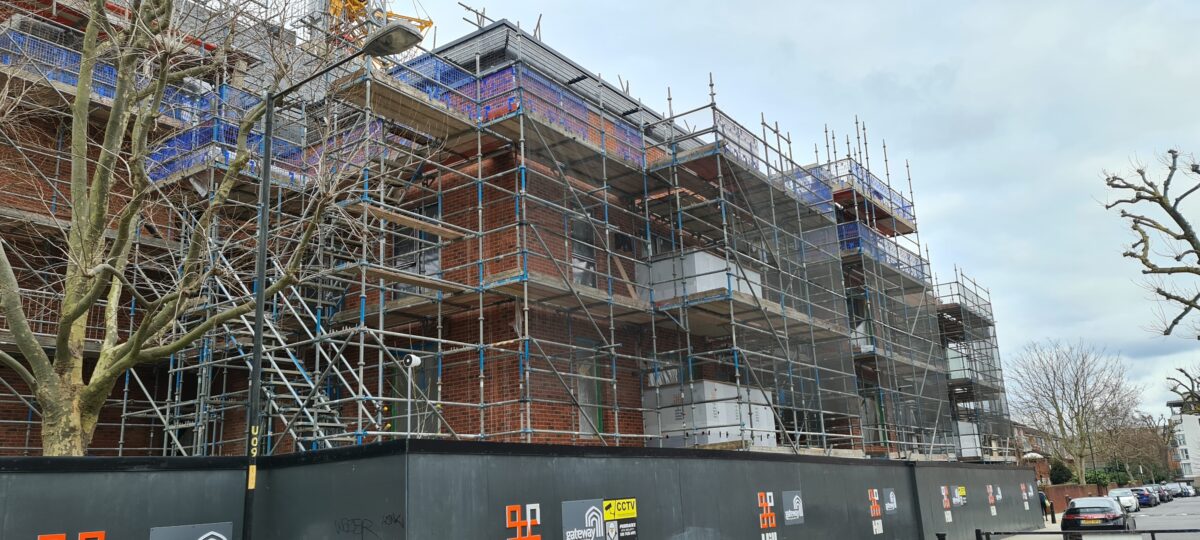The UK is in the midst of a housing crisis that isn’t going away anytime soon, with the pandemic only exacerbating this problem and leaving people struggling financially. Whilst we are seeing strong levels of first time buyers get onto the property ladder, simultaneously nearly 1 in 5 (18.7%) of households are occupied by private renters, with a further 16.7% of households occupied by social renters.[1] This is a huge proportion of the population, and whilst we are working to increase access to homeownership, it’s important that those who are currently renting are not left behind.
At MTVH, it is part of our DNA to support people at all levels and provide a quality home. Whilst we offer a dedicated shared ownership through our SO Resi brand, we also support those who are renting. For example, in London we offer London Living Rent which is a form of ‘try before you buy’ and allows Londoners to rent whilst building up savings to buy a home.
But let’s start with shared ownership.
Shared ownership is needed in society, as it provides an affordable opportunity for people to have access to a stable, well-located home. My personal belief in shared ownership is firmly rooted in my own experience – it’s not only how my wife and I were able to buy our first home, but also how my parents were able to get onto the property ladder after moving to the UK in the 1960s. My story is not unique and so many of my colleagues at MTVH have similar anecdotes about how shared ownership has given them the security of homeownership, which we know helps to open other doors to improve overall quality of life.
Our dedicated shared ownership brand SO Resi recently published a research report in conjunction with Cambridge University that looked at the shared ownership market in 2020. Perhaps most significantly, our research showed that since 2015/16, the number of shared ownership completions per year has increased from just 4,084 to 17,021. But it’s important to understand why shared ownership is taking centre stage for young buyers.
A combination of staggering house price growth, increasingly high deposits and a lack of lower loan to value mortgage options has led to aspiring homeowners moving away from the open market and utilising government products such as shared ownership. Whilst the government’s new 95% mortgages may work to address some of these problems, for many people a five per cent deposit on the open market is still out of reach.
Our research also revealed data sets surrounding the proportion of those who staircase each year. There is a misconception that those in shared ownership homes will never staircase, but our research shows that on average between 2-3% of shared owners staircase to 100% ownership each year. Staircasing isn’t possible for all shared owners, but the flexibility of shared ownership means individuals can make the scheme work to suit them – whether that’s living with a 25% ownership or working to increase your shares over a period of time.
Shared ownership has been around for decades, and the government’s plans to amend the product simultaneously presents both opportunities and concerns. Many of those who took part in our research specifically raised concerns around changes that will allow buyers to purchase a minimum 10% share rather than the current minimum of 25%. Housing providers will also be responsible for repairs for 10 years, leading to an increased financial commitment from providers.
There is no denying that these changes are advantageous for the buyer, and will open the doors even wider to homeownership. However, those surveyed believe the shift in responsibility of repairs will reduce the supply of homes that they are able to build. If the level of affordable homes available drops, this will worsen our current housing crisis and plunge more people into difficult situations when it comes to finding a home.
We know that a good home and environment are key in ensuring that everyone has the chance to live well. But homeownership isn’t possible for everyone – and whilst shared ownership increases access, there are still those who rely long-term on renting, whether privately or through a social housing provider.
To solve the housing crisis, we need to offer solutions that deal with different challenges, which vary as people need homes to rent and to buy. Instead of pitting one tenure against another, we need to collaborate and support those who do depend on the rented sector. Rent prices are rising and this is leaving a generation of people locked in paying high rent prices with no possibility of saving, either for a house deposit or to improve their quality of life.
Long-term, we need some clarity on solving the housing crisis as simply launching temporary schemes isn’t enough anymore – we need real policies that tackle the problems faced by young people today to ensure they can continue to get onto the property ladder at an affordable price in their preferred area.
In the current economic climate, shared ownership demonstrates its importance by supporting people to grow and start their families, put down roots and enjoy the benefits of homeownership without having to find the astronomical deposits required to buy on the open market. Like any product, shared ownership isn’t perfect, nor is it the single solution to the housing crisis, but it is an incredibly important offering that bridges the gap between renting and full ownership.
[1] https://www.statista.com/statistics/286444/england-number-of-private-rented-households/


6 replies on “Solving the housing crisis requires action at all levels”
There are tantalising hints throughout the CCHPR/SO Resi report that Mr Rawal’s assertion in his introduction that: ‘Shared ownership is a great product and it works’ may not be backed up by the research itself. According to CCHPR (and Mr Rawal in his article above) only 2-3% of owners staircase to 100% of the value of their home each year. A dismally low rate given the promise of staircasing is so prevalent in marketing of the tenure.
And even this statistic is likely to be an over-estimation; apparently the research team didn’t think to analyse the 2.3% staircasing statistic between shared owners staircasing to purchase a 100% share in their own home, and those undertaking simultaneous staircasing and selling purely in order to sell.
On the subject of sales the research data apparently indicated that: ‘the majority of those who are going to sell, tend to do this within the first five years but a larger number remain in their property for the longer term’. But the research team didn’t tackle the key question of whether shared owners remain by choice or necessity. Nor did they assess how many shared owners who sell on do it to transition to full ownership of a home.
However, overall, the data clearly indicated that the aspiration to staircase to 100% was unlikely to be achieved, and that many shared owners were likely to find that their starter home didn’t, in fact, propel them up the property ladder as shared ownership marketing strongly suggested it would.
Indeed, the CCHPR research is more concerned with risks to institutional lenders than to shared owners. Shared ownership is apparently an attractive proposition for lenders and investors, generating relatively secure income streams.
Is it a ‘great product’ for shared owners themselves? It’s a question the research fails to address. It is disappointing that evaluation of longer-term outcomes and impact for shared owners is conspicuous in research by its absence.
I agree with the author that we need real long term policies to fix the housing crises. However, shared ownership does not fall into this category. It fails to provide the rights enjoyed by freeholders. The Grenfell Tower disaster has shown that having a small share of a flat in a building that failed to comply with building regulations can result in the occupant footing the entire cost of remediation.
If we really want to support those in the rented sector we should show the same respect for them as for owner occupiers. One way to do this would be to cease talk of ‘staircasing’ and the ‘housing ladder’ which perpetuates the social hierarchy attached to tenure which has existed since feudal times.
I would like somebody to write an article, “shared ownership does not inflate house prices”. My schoolboy economics says that any subsidy to the demand side (Help to Buy is a good example, but housing benefit/universal credit might be others) will put up the price when supply is constrained?
Mr Rawal, I do believe you have been blind sided by your job of selling shared ownership properties. In many situations I’ve encountered people who are stuck, cannot staircase (for wanting to) and the sales process is so complex they fear the stages and hence stay put. When initially sold new build shared ownership property is already marketed at a premium price, over inflating house prices. All to provide an income stream that isn’t necessary. Take away the premium attached to a new build and you are likely to have many current shared owners who would have been able to obtain a mortgage on 100% of the property rather than a fraction. If you’re pushed to take the maximum share you can afford, price increases mean that as years go by there is an exponentially lower chance of staircasing as the remaining share becomes more out of reach. It’s perpetually unattainable even if you double your salary (impossible in just a few years).
This is a clever product, cleverly marketed at the financially vulnerable, where housing associations, mortgage lenders, insurance providers, govt and maintenance firms are all fully established and profiteering with full knowledge that once trapped, you’ll never be able to escape.
Show me the numbers of those who staircase to 100%, show me how many years it takes from initial purchase, show me these figures compared to those who don’t, and show me those who are able to have a smooth selling process. The research has not been fully represented and is manipulated to push a story that’s so far from its truth.
Having bought a shared ownership property in the 90’s, never again and luckily managed to sell my share on, although for what I paid for it! Lack of maintenance, care, build quality and inability to get the housing association to take responsibility for structural repairs or the security of the building (I had to get hold of the mortgage company and their copy of the insurance on the building) meant that it really felt like a no man’s land of responsibility and little has changed in the last 30 years! Nothing much has changed my mind on this form of home ownership and it probably does suit some, but I’d still say that more needs to be done on responsibilities of the housing association and accountability, as it really is buyer beware.